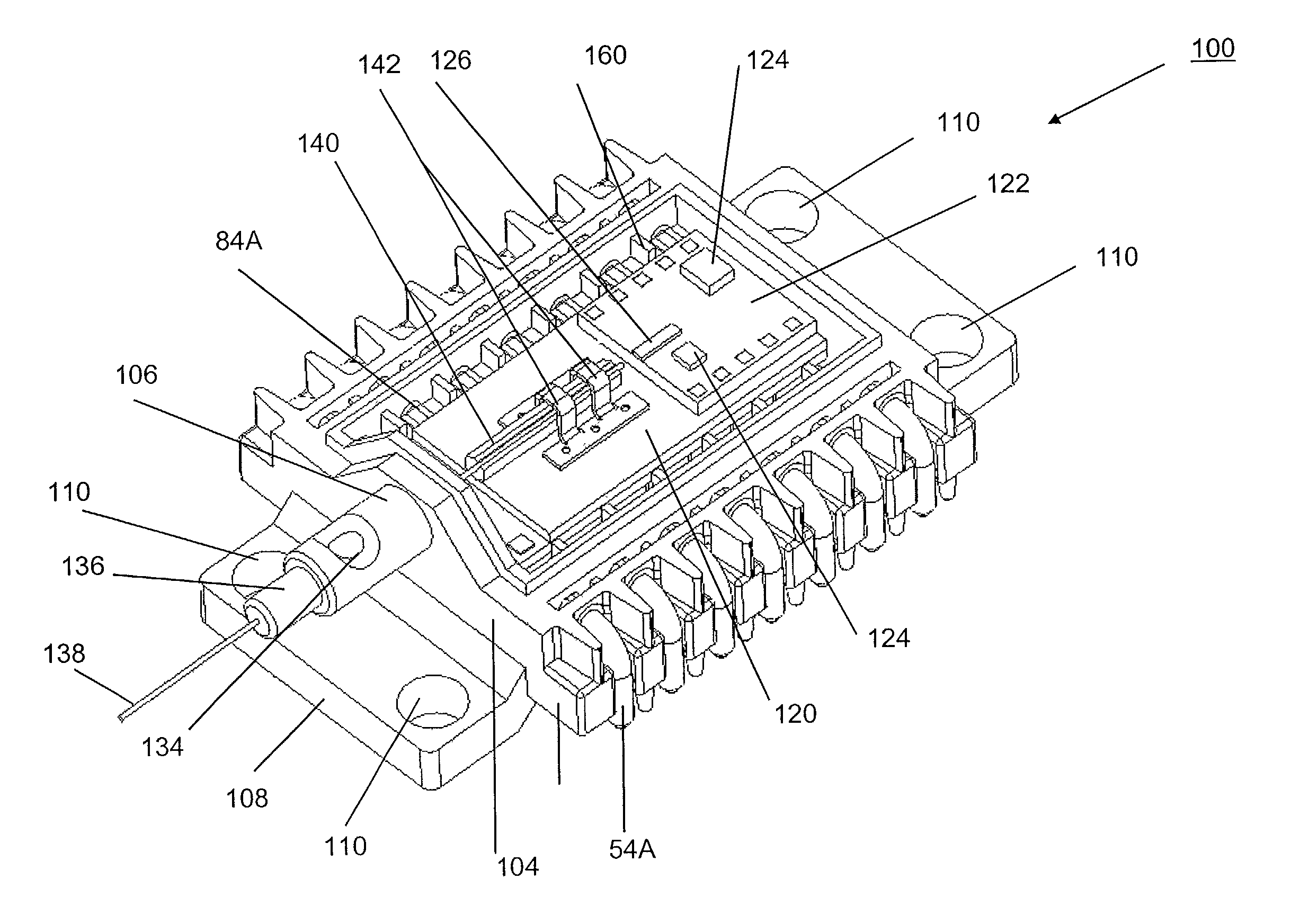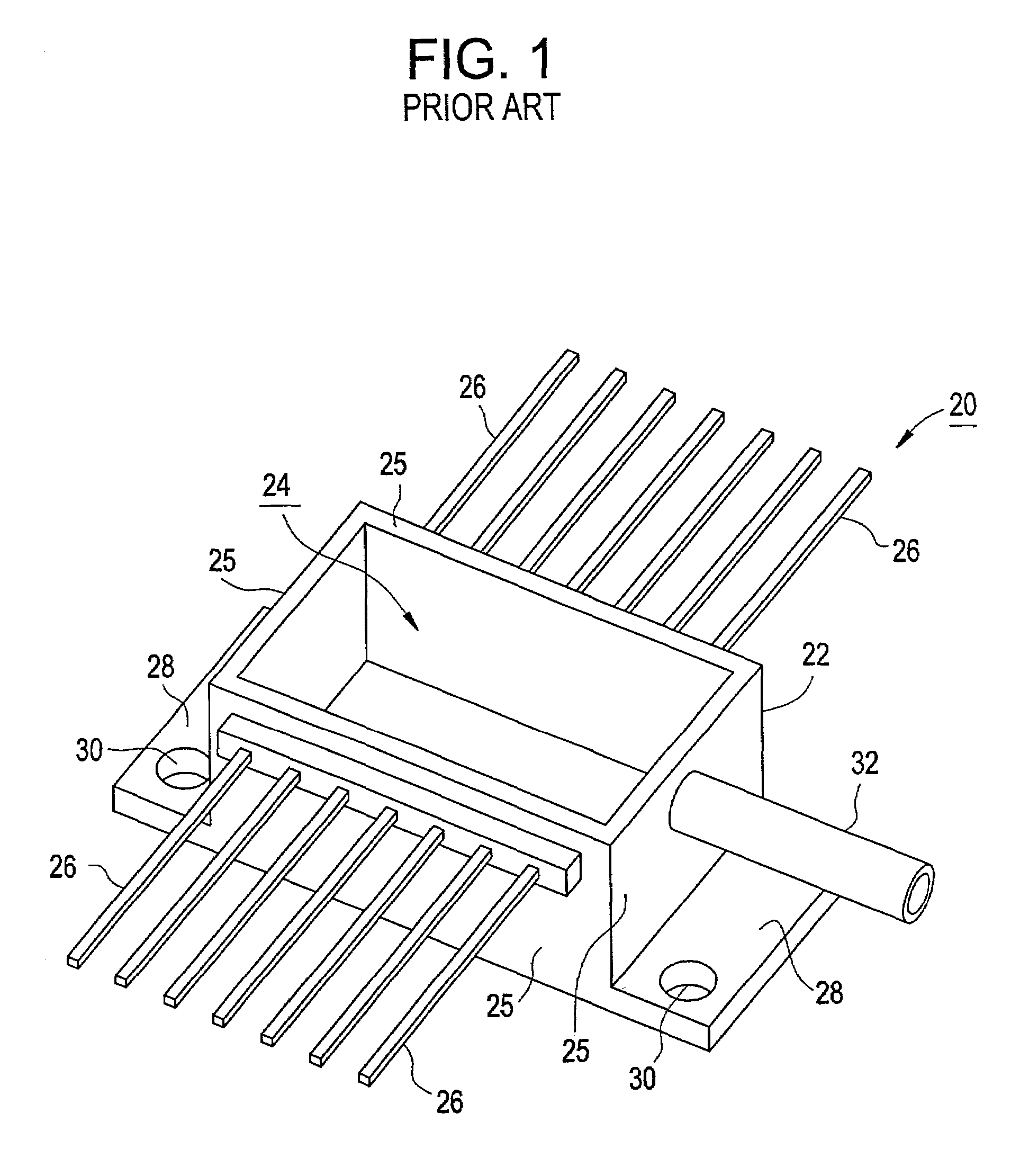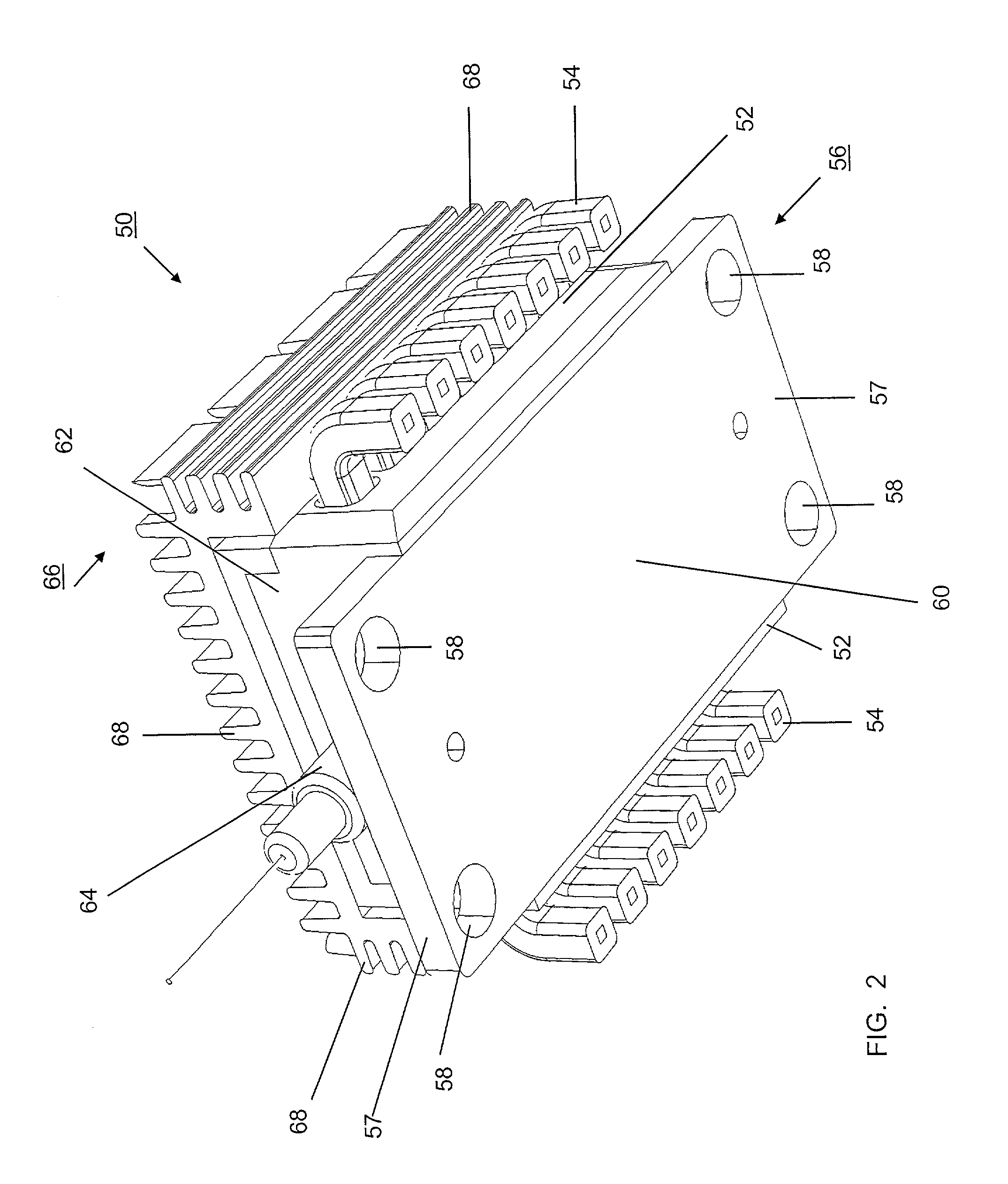High performance optoelectronic packaging assembly
a packaging assembly, optoelectronic technology, applied in the direction of optical elements, semiconductor lasers, instruments, etc., can solve the problems of signal flow issues that still require the full attention and creativity of designers, device size has not solved fundamental signal flow bottlenecks, and the overall system bandwidth remains limited. , to achieve the effect of simple, accurate and stable optical alignment, good thermal performance and convenient mounting of optoelectronic devices
- Summary
- Abstract
- Description
- Claims
- Application Information
AI Technical Summary
Benefits of technology
Problems solved by technology
Method used
Image
Examples
Embodiment Construction
[0039]References will now be made in detail to various embodiments of the present invention, examples of which are illustrated in the accompanying drawings. Those embodiments relate to novel, unobvious, and useful optoelectronic packaging assemblies. Typically, all body components (such as covers, base, and submount) of the illustrated optoelectronic packaging assemblies are molded from a liquid crystal polymer (such as VECTRA). Those body components are beneficially plated or coated with a conductive material, preferably on both internally and externally. The conductive material electrically connects various features (such as subsequently described transmission line pin shields and cover cavity walls) to electrical ground. The conductive material further provides for electrical shielding that isolates devices within the optoelectronic packaging assemblies from exterior elements, while also reducing or eliminating electrical resonance within the optoelectronic packaging assemblies. ...
PUM
 Login to View More
Login to View More Abstract
Description
Claims
Application Information
 Login to View More
Login to View More - R&D
- Intellectual Property
- Life Sciences
- Materials
- Tech Scout
- Unparalleled Data Quality
- Higher Quality Content
- 60% Fewer Hallucinations
Browse by: Latest US Patents, China's latest patents, Technical Efficacy Thesaurus, Application Domain, Technology Topic, Popular Technical Reports.
© 2025 PatSnap. All rights reserved.Legal|Privacy policy|Modern Slavery Act Transparency Statement|Sitemap|About US| Contact US: help@patsnap.com



